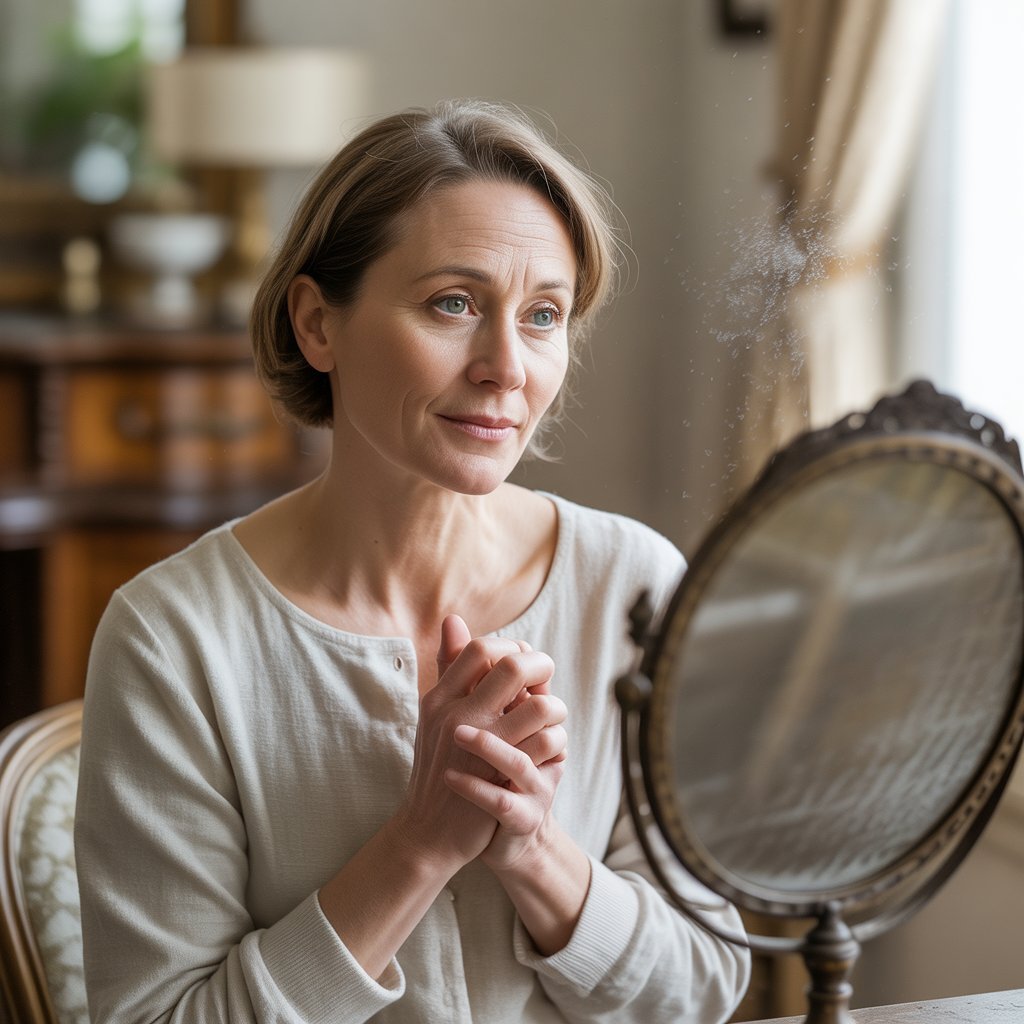Why Women Over 45 Are Being Left Behind in the Bedroom—And Unfairly Blamed for It
Marisol, a vibrant 48-year-old, lay awake beside her partner one night. Her body felt cold, distant—even though her heart didn’t. She wondered: Was it her fault? She wasn’t alone. So many women over 45 in the bedroom carry misplaced guilt, believing they’ve failed. But what if the real culprit is societal misunderstanding—and not the women themselves?
A Mirror Reflection: What Aging and Intimacy Really Feels Like
Imagine your body as a once-speedy car, now more seasoned. It still runs beautifully—but there might be a creak in the door or a change in fuel efficiency. Aging doesn’t mean breakdown—it means transformation. Women over 45 in the bedroom often experience this shift: the engine’s still there, but how it runs has subtly changed.
This reflects a universal human truth: life shifts, and intimacy must adapt. That’s not a failure—it’s evolution.

5 Real Reasons Women Over 45 Struggle—and Are Blamed—In Intimacy
1. Hormones Change—but Many Think They’ve Stopped Feeling
Around half of women report sexual dysfunction during and after menopause—vaginal dryness, pain, and lowered arousal are common Lippincott Journals+2Medical News Today+2PMC+2. Hormonal shifts can reduce estrogen and moisture, making sex physically uncomfortable—not a sign of disinterest.
Yet society often expects older women to maintain youthful levels of desire, leaving them feeling blamed for natural physiological changes.
2. Stress and Self-Worth Take a Toll
Midlife often means juggling aging parents, teenage children, demanding jobs—and sometimes caring for grandchildren. This chronic stress zaps energy and libido Glamour+2World Stock Market+2Cambridge University Press & Assessment+2. At the same time, wounds to body image can erode confidence—some women internalize cultural messages suggesting they’re no longer attractive PMC.
When the mirror doesn’t look like the “desirable” reflection seen in media, many mistakenly blame themselves for “losing it.”

3. Relationship Patterns Shift—and Women Are Made to Feel Guilty
Studies show long-term relationships, especially those over 7 years, often see women’s interest decline more sharply than men’s1. That decline isn’t about love—it’s rooted in familiarity, routine, even unresolved emotional tensions. Blame is misplaced—women are not “boring” or “broken,” they have grown through different seasons of life.
4. Medical Issues Are Real—but Rarely Discussed
Things like pain with intercourse, antidepressants lowering arousal, and estrogen-related vaginal dryness matter—and many never seek help . Fear or embarrassment often holds women back, and that silence becomes shame. They’re left thinking it’s their fault—not a treatable medical situation.
🎨 Image Prompt: A tranquil bedside scene with candles and water, suggesting gentle exploration beyond penetrative sex.
5. Society Still Equates Aging with Asexuality
Despite evidence that a quarter of women in their 40s–60s maintain a high interest in sex, the prevailing narrative paints women over 45 in the bedroom as “less interested” or “past their prime.” The truth? Desire doesn’t vanish—it transforms.
Older women may prioritize intimacy, emotional resonance, and creativity in sex—qualities often more fulfilling than youthful passion
Expert Insights—Shifting the Narrative
Sexologists and researchers urge a reframe. A large qualitative study found many women aged 45–60 experience positive changes in intimacy, thanks to greater self-awareness, improved communication, and body acceptance . Pleasure isn’t just physical; it’s emotional and mental.
Dr. Heather Bartos emphasizes that while hormonal shifts matter, emotional wellbeing, stress, and relationship quality often play an even bigger role in sexual satisfaction HealthyWomen.
Harvard’s Dr. Jan Leslie Shifren reminds us that those who prioritize intimacy are likelier to stay sexually active, even if the form changes Harvard Health. The message: desire is dynamic—not lost.
Strategies worth exploring include:
- Medical: Lubricants, local estrogen, testosterone therapy.
- Lifestyle: Exercise, stress reduction, open communication.
- Emotional: Counseling to address self-image and relationship issues.
- Creativity: Non-penetrative intimacy, sensual massage, laughter, novelty.

Break the Shame—Reclaim Bedroom Confidence After 45
Here’s how to shift the mindset:
- Normalize Change: Accept that libido might ebb and flow—it’s not a personal failure.
- Communicate Clearly: Share with your partner: “I feel pain, not distance.”
- Get Medical Support: Vaginal cream, HRT, or pelvic-floor therapy can help.
- Introduce Creativity: Try slow touch, toys, sensual baths.
- Invest in Self-Esteem: Celebrate your body’s story; each line and scar speaks beauty.
📣 Conclusion: Modern Midlife Deserves Pleasure
Women over 45 in the bedroom aren’t broken—they’re evolving. Desire doesn’t vanish; it transforms. The real issue isn’t women themselves—it’s stigma.
It’s time to rewrite the narrative:
- Aging doesn’t equal asexuality—it’s a chance for deeper intimacy.
- Desire doesn’t disappear—it adapts.
- Women aren’t at fault—it’s societal expectations that are.
💬 We’d Love to Hear from You
If you’re over 45, how has your intimate life changed—and what helped?
Share your insights in the comments to break stigma and connect.



Pingback: Girls Just Want Fun: Here’s What That Really Means -
Pingback: Survived Sex Trafficking: A Journey of Resilience and Hope -
Pingback: What Women Want Sexually vs. What Really Happens -